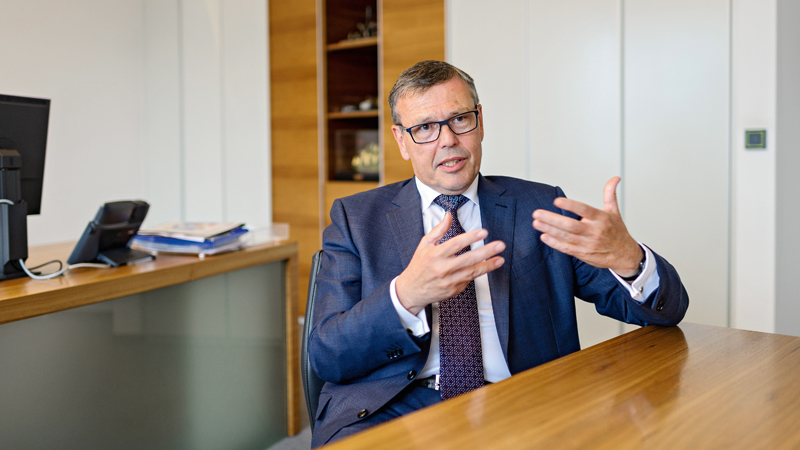This year’s international conference for specialists from the transformer industry in Hong Kong is dedicated to the topic of megacities. Managing Director Michael Rohde explains what global urbanization means for the power grids of tomorrow.
Why are megacities such a hot topic?
Because huge metropolises are the future. According to the definition given by the United Nations, a megacity is a city with more than ten million inhabitants. There are already 28 such cities, which have a combined population of almost half a billion people. Today, around 55 percent of the world’s population live in urban areas—by 2050, this figure will be two-thirds. By looking at existing megacities, we can put them under the microscope and find out what lies ahead for future power grids.

What are the greatest challenges for the power supply?
Working together with a consultancy firm, we have conducted a study and worked out three central aspects. One particularly important area is the concept of resilience. The strains placed on power grids are increasing, so it is important that the energy supply does not collapse completely each time a fault occurs. A smart network management system which also allows networks to be operated specifically in an overload state will therefore be essential. However, this will only work—and this is the second elementary finding of the study – with smart equipment.
50 percent of megacities are in Asia. This was one of the reasons why Hong Kong was selected as the venue for “TRANSFORM”.
For suppliers, it is of paramount importance that they understand the condition and therefore the reliability and availability of their equipment. The third aspect relates to efficiency: How can I transport electricity to the megacities, preferably without great expense and with minimal losses? This is something we also discuss at TRANSFORM.
What is the situation regarding safety?
In densely populated regions, hazard prevention and environmental aspects are naturally a key concern. No one wants 300 metric tons of mineral oil to start burning right in the middle of a city. When we think about the transformers of tomorrow, we also have to take alternative insulation fluids into account.
How can a format like TRANSFORM contribute to finding answers and solutions to the major questions of the future?
One element of the conference is the Innovation Lab where we work together with the visitors to figure out what the transformers of tomorrow could look like based on the requirements of the megacities. Past conferences have shown just how productive these meetings of about 400 industry experts can be. Realworld applications have already been developed from the many ideas that have been discussed there.
Can you give us an example?
ETOS, our system solution for monitoring, regulating, and digitalizing power transformers. We presented the concept simply as a vision at TRANSFORM in Vienna back in 2015. Now it is already in use.
REINHAUSEN INSIDE
Since 1998, MR has been one of the partner companies working alongside other premium suppliers to organize TRANSFORM. The conference and exhibition, which is aimed at transformer manufacturers, grid operators, and the industry in general, is held every three years — this year in Hong Kong in September.
Interested?
For more information, visit: www.transform-hongkong-2019.net
